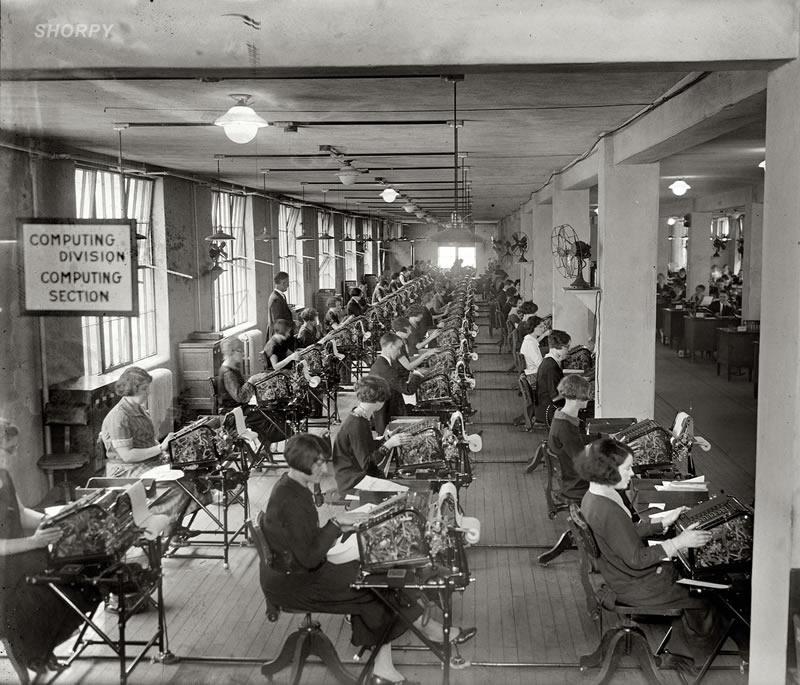My friend Miss Fipi Lele, who provides me with a lot of pictures for my blogs, pointed me to this photo on Shorpy, “The 100-Year-Old Photo Blog”. It depicts “multi-processor computing”, circa 1924:

Click the photo to see it on its original site, Shorpy, at full size.
The caption for the photo at Shorpy is:
November 24, 1924. Washington, D.C. “Bonus Bureau, Computing Division. Many clerks figure the amount of the bonus each veteran is entitled to.”
Before the age of electronic computers, the term computer referred to someone whose profession was performing mathematical calculations by hand.
Here’s what Wikipedia has to say about the profession’s origins (see the entry Human Computer):
The approach was taken for astronomical and other complex calculations. Perhaps the first example of organized human computing was by the Frenchman Alexis Claude Clairaut (1713–1765), when he divided the computation to determine timing of the return of Halley’s Comet with two colleagues, Joseph-Jérôme Le Lepart and Nicole-Reine Étable. For some men being a computer was a temporary position until they moved on to greater advancements. For women the occupation was generally closed, but this changed in the late nineteenth century with Edward Charles Pickering. His group was at times termed “Pickering’s Harem.” Many of the women astronomers from this era are computers with possibly the best known being Henrietta Swan Leavitt. Florence Cushman was one of the Harvard University computers from 1888 onward. Among her best known works for him was A Catalogue of 16,300 Stars Observed with the 12-inch Meridian Photometer. She also worked with Annie Jump Cannon. That said as a female computer she normally earned half of what a male counterpart would.
The Indian mathematician Radhanath Sikdar was employed as a “computer” for the Great Trigonometric Survey of India in 1840. It was he who first identified and calculated the height of the world’s highest mountain, later called Mount Everest.